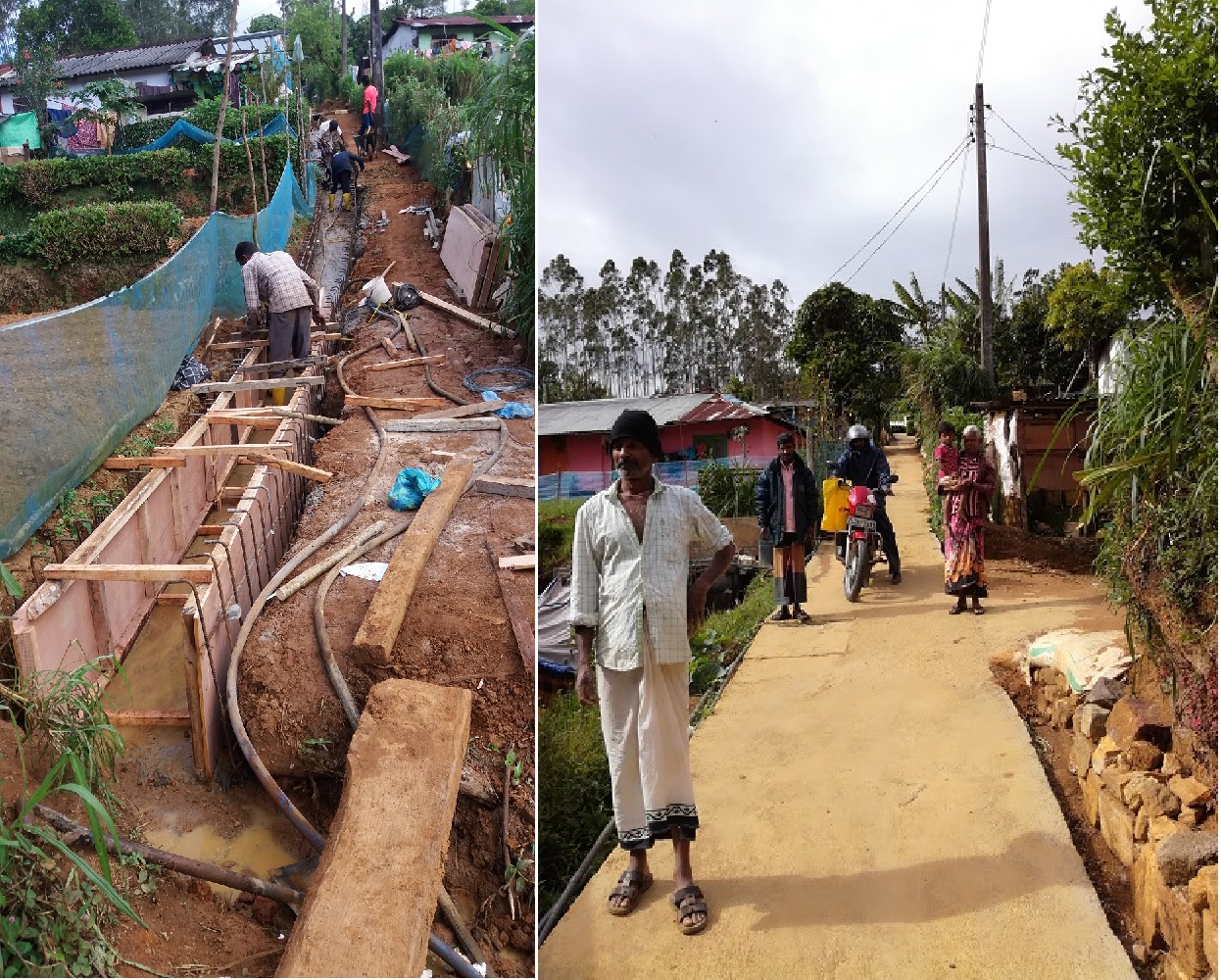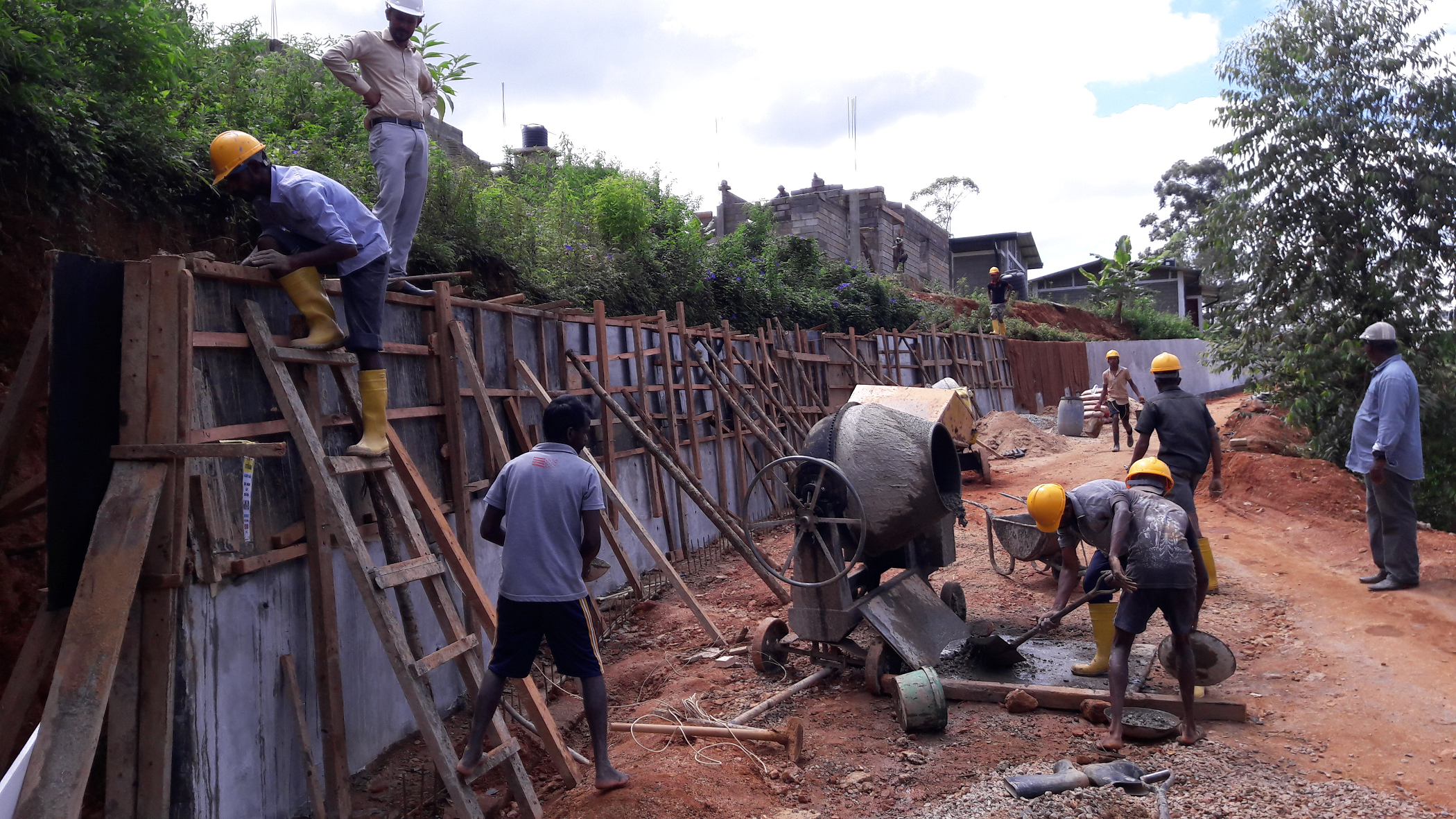UN-Habitat Supports Disaster Risk Reduction Initiatives in Nuwara Eliya District with Funding from KOICA
30 March 2018, Nuwara Eliya. UN-Habitat with funding from the Korea International Cooperation Agency (KOICA) is contributing towards human development in the Nuwara Eliya district through the project Human Development Initiative through Empowerment and Settlement Improvement in the Plantation Settlements in Sri Lanka (HDI). The Project aims to empower and build resilient plantation communities with satisfactory living conditions, safer settlements, better access to basic services and improved livelihood skills. The main focus of the HDI project is the provision of 23 community infrastructure facilities in a number of settlements. Due to the fragile nature of the central hilly region and its vulnerability to natural disasters, UN-Habitat has focused special attention towards implementing Disaster Risk Reduction (DRR) interventions in the project locations. These measures are vitally important in building community resilience to natural
disasters. Based on needs identified by community members at Community Action Planning (CAP) workshops in the project locations, about 15 DRR initiatives have been implemented by UN-Habitat in the past 12 months.
The types of DRR initiatives include the construction and improvement of internal access roads, retaining walls, toe walls, slope protection and turfing as well as storm water drainage systems that include features such as small bridges, culverts and channel crossings. To implement all community infrastructure activities on the ground, UN-Habitat partnered with Community Based Organisations (CBOs) in the respective villages and estates. Technical advice such as detailed designs, Bills of Quantities and supervision to ensure national construction standards was provided by UN-Habitat, while each CBO hired construction workers, purchased building materials and constructed the community asset. The village residents were closely involved in the project implementation, providing their in-kind labour support through voluntary “Shramadana” activities to clean the road sides and beautify the area by planting shrubs and flowering plants and turfing all the locations following construction.
Discussing the construction of a large retaining wall and drainage structure at Dunsinane estate, Mr.W Ruban, the Divisional President of the CBO implementing the project said “This retaining wall was constructed following a community request. At Dunsinane estate, 158 houses are being constructed through the Indian Housing Project. This retaining wall and storm water drainage system is absolutely critical for the structural safety of the new settlement. It is a key DRR feature that will ensure safety of the residents. The drainage system will help the residents manage the rain water safely and effectively.”
Similarly, in Kikilyamana village, an internal access road was widened and constructed with concrete to replace the earlier two foot wide footpath. The Grama Niladhari of the GN division Mr. Amila Prasanga said “I thank KOICA,
UN-Habitat and the community for the immense support given to construct the road. There are many school children, elderly people and farmers benefiting from this road. It is now easier for me to provide services to the community”.

Internal access road with a drainage system in Kikiliyamana village – during construction (L) and following completion (R).
Disaster Risk Reduction infrastructure initiatives such as retaining walls and storm water drainage systems have provided many benefits, both to the environment as well as the residents. These include stabilization of slopes and embankments; protection from landslides; proper direction of storm water and surface run-off to water retention bodies and making internal roads safer for pedestrian and vehicular traffic.
In addition to these specific DRR initiatives, UN-Habitat has also incorporated disaster resilient features in community buildings constructed by the project such as Child Development Centres and Multi-Purpose Community Centres (MPCC). The DRR features included in the buildings are raised foundations to withstand flooding, structural features incorporating post-disaster building standards such as external columns, plinth beams, a continuous lintel, roof beam and column and roof anchoring to strengthen the building and to withstand high winds and cyclones. All buildings are constructed following Disaster Management Center Guidelines and NBRO instructions enabling their use as temporary emergency shelters during a disaster situation.
The HDI project is contributing towards human development through capacity building of youth, communities and local authorities; increasing resilience of the communities through settlement planning and community infrastructure; and through awareness creation towards mainstreaming plantation settlements. It is implemented in close collaboration with the Ministry of Hill Country New Villages, Infrastructure and Community Development. It is expected to benefit over 10,000 persons directly and 250,000 persons indirectly in Nuwara Eliya district. The project is being implemented from January 2017 to March 2018 in the Kothmale, Nuwara Eliya and Walapane Divisional Secretariat divisions.


